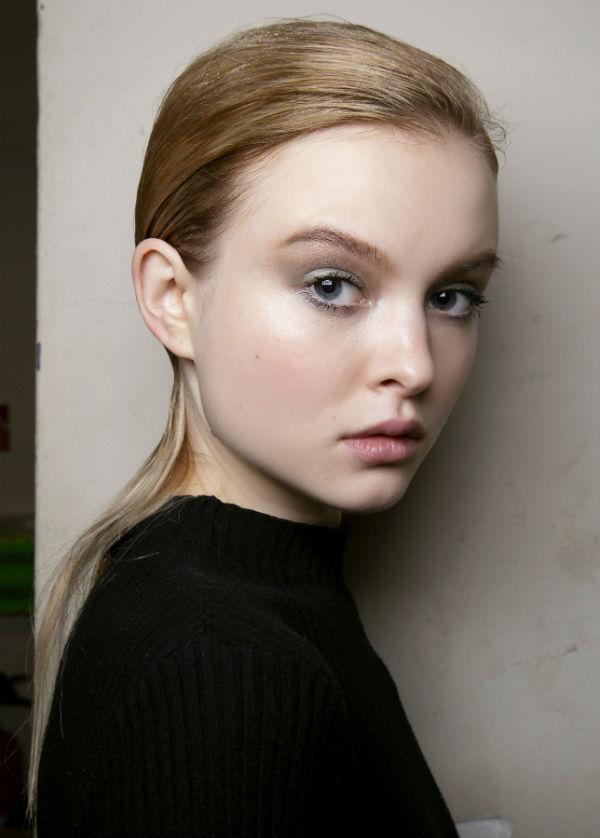Why is green tea extract in your cleanser? What is willow bark doing in your exfoliant? And what the heck is gotu kola? If you’ve ever wondered about the botanicals in your skincare, this is the guide for you.
We talked to botanical expert and owner of Farm To Skin, Patricia Walker, to learn more about the most commonly used botanicals, what they’re doing in your products, and why they’re better for you than fillers, synthetics, and so-called natural ingredients.
WHAT ARE BOTANICALS?
Before we had entire stores and departments dedicated to nourishing and treating our skin, we had the things the earth grew for us. Since ancient times, humans have harvested plant-derived materials for everything from soothing insect bites with antiseptic herbs to making ourselves smell better with fragrant oils. We cleansed, moisturized, and treated our skin with plant combinations that had been passed down through the centuries and depending on what was native to our environment.
Today, when we talk about botanical ingredients, we’re referring to ingredients that originate from the herbs, flowers, leaves, fruits, seeds, and roots of various plants. For use in skincare and beauty products, the skin-beneficial components of a plant are “dissolved using a solvent to create an extract, distilled to create essential oils and hydrosols, or pressurized to create oils”, according to Walker.
WHAT ARE THE MOST COMMON BOTANICALS?
Botanicals currently makeup the largest category of cosmeceutical additives in the marketplace. As more consumers demand ethical, sustainable, and clean skincare ingredients, the use of botanicals also grows.
There are literally hundreds of potential botanical ingredients to be found on the shelves of beauty stores everywhere. But with the help of our botanical expert, we’ve narrowed it down to the 5 most common: aloe, green tea extract, lavender, turmeric, and sunflower oil. We’ll tell you more about the benefits of each below.
ALOE
Aloe barbadensis, or aloe vera, is a succulent plant that’s highly regarded for its anti-inflammatory, humectant, and anti-itch qualities. “The pulp of the aloe plant is soothing to the skin and therefore used commonly to treat sunburn and other skin irritations”, says Walker. Packed into masks, serums, toners, and moisturizers, aloe is also antimicrobial and is suited to all skin types, including damaged, sensitive, and dry skin.
TUMERIC
Remember those ancient ingredients we were talking about? Walker says that turmeric is one that’s been “used for centuries to heal almost every skin condition. It’s natural antiseptic properties especially help cure and prevent acne.”
GREEN TEA EXTRACT
But Walker tells us that green tea has benefits beyond its impact on aging: “Green tea helps to fight off free radicals that cause damage to aging skin while its antibacterial properties help to prevent acne”. Which is why you’ll find it in everything from acne-fighting cleansers to anti-wrinkle eye creams.
SUNFLOWER OIL
A fabulous source of vitamin E and rich in both nutrients and antioxidants, sunflower oil makes an excellent base for any product intended for moisturizing your skin. That’s because sunflower oil contains high amount of linoleic fatty acid, “which helps to balance skin, decrease inflammation, and support the skin’s barrier.” It’s also an effective acne-fighting botanical that can reduce the redness associated with flare-ups and extremely dry skin.
WHY CHOOSE BOTANICALS?
When performed correctly, the process of extracting parts and components from a plant results in a highly concentrated form of that particular plant’s benefits. The pure extract retains all of the original advantages of the plant source, but in a highly formidable form. Formulated into our various cleansing, toning, and moisturizing products, botanical extracts support our skin’s health, texture, tone, and integrity.
While some may argue that lab-created ingredients are more beneficial than plant-derived ingredients, nothing could be further from the truth. According to Walker, these synthetic ingredients “contain only a fraction of the nutrient content found in plants, and while they are less expensive to produce, our body does not easily recognize them.” Botanicals, on the other hand, are designed by nature and work synergistically with our skin’s natural properties.
And even natural ingredients don’t hold any weight in comparison to botanicals. Walker explains that, although natural ingredients “includes all plant derived botanicals”, the term can also be used to describe not-so-beneficial animal and petroleum-derived ingredients. “Mineral oil, lanolin, and alcohol are all considered natural, but are not necessarily the best for your skin or the most ethical”.
THE BEST BOTANICAL BEAUTY PRODUCTS
When seeking the best botanical beauty products, Walker suggests that “an easy way to determine a good botanical product is by looking at the first three ingredients to see what makes up the majority of the product. For oils in particular, look for products that are unrefined, cold pressed, and rich in color and scent as they are more likely to contain high amounts of antioxidants and nutrients.” You should also look for small batch, hand poured, skin care lines. These brands are more likely to ensure that “each and every ingredient is fresh and thoughtfully considered.”
Like other unregulated beauty terms, problematic botanicals can be found in skincare products and by unprincipled brands that care more about their bottom line than your health and wellbeing. Until such time that way we adequately regulate our skincare products, the onus for finding ethical and authentic ingredients is on the consumer. And knowing what to look for when it comes to botanicals can save you money, time, and skin trouble that nobody needs.



